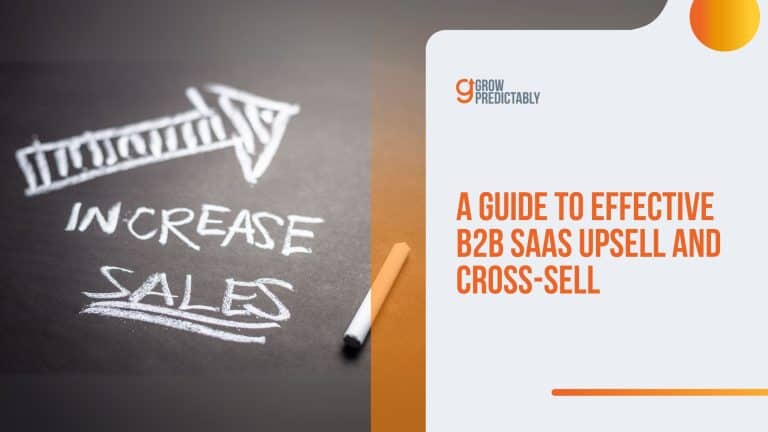How to Generate High-Quality B2B SaaS Content Ideas: 15 Proven Ideas that Work
Stuck on what to write for your B2B SaaS blog?
Does the blank screen seem like it’s mocking you?
You’re in good company.
60% of B2B marketers say that crafting engaging content is their toughest nut to crack.
But here’s a fun fact: companies that blog regularly rake in 67% more monthly leads.
Imagine the impact steady, targeted content could have on your SaaS business.
By nailing your B2B SaaS content ideas, your blog post becomes a lead magnet, builds your reputation, and boosts conversions.
Ready to discover the secrets to creating can’t-miss B2B SaaS content?
Stick around to explore 15 proven content ideas that will supercharge your content strategy and leave your competitors playing catch-up.
Why Strategic Content is Crucial for SaaS Content Marketing Success
In the B2B SaaS arena, content marketing rules the roost.
Crafting successful B2B SaaS content means more than just pumping out blog posts.
It’s all about creating content and sharing valuable, consistent material to attract and retain a well-defined audience.
The goal?
Drive profitable customer action through content marketing.
Quality content is crucial for driving engagement and improving visibility and ranking in search engines.
Commit to a niche; try to stop being everything to everyone.“
Andrew Davis
But here’s the thing—it’s not about churning out content by the bucketload.
It’s about nailing the precision of your message.
Make sure your content strategy highlights the following:
- The unique solutions your software provides
- The specific challenges your audience faces
A solid, tailored content strategy ensures your message hits home with decision-makers and influencers in your target companies.
This can:
- Position your brand as an industry thought leader
- Build awareness of your product’s unique value
- Nurture leads through educational and engaging material
And here’s a stat to back it up: Over 70% of B2B marketers plan to create more quality content in 2023 than in previous years (thanks, Content Marketing Institute).
This underscores why a well-thought-out strategy is essential to stay competitive.
Need a game-changer for your content plan?
Try the Customer Avatar Canvas.
This tool helps you get super clear on who your ideal clients are by mapping out their challenges, aspirations, and the solutions they’re after.
With this insight, you can craft quality content that directly addresses their pain points and positions your SaaS as their go-to solution.
Consider these key points for your avatars:
Goals: What they aim to achieve
Demographics: Age, Gender, Location
Job Role and Industry: Position, Sector
Pain Points: Daily challenges they face
How to Generate High-Quality B2B SaaS Content Ideas
Keeping your content fresh and engaging can feel like a tall order.
But don’t worry—I’ve got some practical strategies to ensure your next piece is both high-quality and a hit with your audience.
Tap Into Customer Conversations
Listening to your customers isn’t just courteous—it’s crucial.
Their feedback directly highlights what’s on their minds, providing you with content topics that are relevant and valuable.
Addressing common questions or problems in your content reinforces your role as a helpful resource, strengthening your relationship with your audience and boosting brand loyalty.
Team Up with Internal Experts
Your sales and support people are on the front lines, talking to your customers every day.
They have firsthand insights into what your audience needs and wants.
By collaborating with them, you can brainstorm content that addresses real-world challenges, making your content practical and relatable.
Dive Deep into Keyword Research
Keywords are like signposts, guiding you to what your audience is curious about.
Tools like SEMrush and Ahrefs reveal not only trending searches but also the searcher’s intent.
Aligning your content with these keywords helps you be present when potential customers are searching, increasing your visibility and potential for engagement.
Analyze Competitor Content
Competitor analysis isn’t about copying; it’s about understanding what’s working in your space.
By scrutinizing their top-performing content, you can identify trends they’re tapping into or gaps they’re missing.
This allows you to create valuable content that fills these voids, setting you apart and proving your unique value.
Follow Industry Trends
Keeping a pulse on industry trends positions you as a thought leader.
Reports and expert discussions can reveal where your industry is headed, allowing you to craft content that prepares your audience for what’s next.
This foresight establishes trust, showing that you’re not just keeping pace but leading the way.
Review Your Past Content
Your past content is a treasure trove of insights.
Analyzing what has performed well helps inform what your audience finds valuable.
By reviewing user interactions and engagement, you can identify successful formats or topics you can replicate or expand on, ensuring continuous audience engagement.
Encourage User-Generated Content
User-generated content (UGC) brings an authenticity that formal content sometimes can’t.
When users share their experiences or success stories, it adds credibility to your brand through real-world demonstrations.
Plus, UGC can spark new ideas for content, helping you expand your reach organically and build a community around your brand.
15 Proven Content Ideas that Work for B2B SaaS Companies

Need fresh content ideas for your B2B SaaS company?
You got it.
Here are proven marketing content ideas that will keep your audience hooked and drive real results.
1. Case Studies and Customer Stories
Case studies and customer stories are golden for your SaaS content marketing strategy.
They highlight real-world examples of how your product solves client issues, making it easier for potential customers to see the value.
Providing measurable outcomes and ROI statistics can make your claims more believable.
If possible, include testimonials and quotes from happy customers—they add a layer of credibility that resonates well with prospects.
According to a Demand Gen Report, 79% of B2B buyers said they viewed case studies during their purchasing process.
- Showcase how your product solved problems for existing clients.
- Include measurable outcomes and ROI.
- Provide testimonials and quotes from satisfied customers.
2. Whitepapers and eBooks
These aren’t just long reads; they’re filled with in-depth, valuable content on industry-specific challenges.
For B2B SaaS companies, these guides can position you as an expert while offering actionable strategies and insights that your customers can implement.
Gated content—usually found on a dedicated landing page requiring an email address to access—can be an effective way to capture high-quality leads.
According to The Marketing Insider Group, businesses that use eBooks and whitepapers generate 67% more leads than those that do not.
- Offer in-depth guides on industry-specific challenges.
- Provide actionable strategies and insights.
- Use gated content to naturally capture and generate leads.
3. Blog Posts
A blog post is great for providing ongoing value and establishing your SaaS company as a thought leader.
Create how-to guides and tutorials to help users get the most out of your product. Share industry news and trends to keep your audience informed.
Best practices on relevant topics can set you up as an industry expert, driving organic traffic to your site. Resource posts, offering freebies and useful information, can further establish your authority and engage readers with in-depth insights and practical templates.
HubSpot found that blogging helps companies acquire 55% more visitors compared to those without blogs.
- Create how-to guides and tutorials related to your SaaS product.
- Share industry news and trends.
- Provide best practices on relevant topics.
4. Webinars and Live Demos
Webinars and live demos allow you to engage directly with your audience.
Host live product demonstrations to show the practical benefits of your product in real time.
You can also bring in industry experts to share their insights, adding authority to your content.
Offering Q&A sessions during or after the event lets you immediately address potential customer concerns.
Research by ON24 suggests that 76% of B2B buyers prefer webinars for learning about new products.
- Host live product demonstrations.
- Conduct webinars with industry experts.
- Offer Q&A sessions during or after the event.
5. Infographics
Infographics make your data and statistics easily digestible, turning complex information into visual eye candy.
They can effectively summarize reports or case studies, making the content more accessible.
Share them on social media to extend your reach even further—visual content is shared three times more often than other types.
According to Content Marketing Institute, infographics can increase web traffic by up to 12%.
- Visualize statistics and data to make complex information easily digestible.
- Summarize reports or case studies visually.
- Share on social media for wider reach.
6. Video Content
Video content offers a dynamic way to communicate your SaaS product’s value, making it easier for viewers to understand complex features quickly.
Producing explainer videos about your software can simplify your product’s functionality for new users.
Sharing customer success stories through video testimonials adds authenticity and credibility to your brand.
Additionally, tutorial videos can help users dive into advanced features, boosting their overall experience and satisfaction.
According to HubSpot, 86% of businesses use video as a marketing tool, and 93% of marketers who use video say it’s an important part of their strategy.
- Produce explainer videos about your software.
- Share customer success stories through video testimonials.
- Offer tutorial videos for better product understanding.
7. Email Newsletters
Email newsletters are a fantastic way to keep your target audience updated and engaged.
Share company updates, new features, and industry news to keep your users in the loop.
Providing valuable tips and insights can make your emails more than just promotional content—they become resources your audience looks forward to.
Segmenting your list allows you to target specific groups of users with personalized content, boosting engagement rates.
According to Campaign Monitor, segmented campaigns can result in a 760% increase in revenue.
- Share company updates, new features, and industry news.
- Provide valuable tips and insights.
- Segment your list to target specific groups of users.
8. Interactive Content
Interactive content can turn passive readers into active participants.
Develop calculators or assessment tools related to your SaaS for users to see immediate value.
Creating quizzes or surveys can engage users and offer a fun way to gather data.
Offering personalized reports based on user inputs can make the content more relevant and useful, improving customer satisfaction.
According to the Content Marketing Institute, interactive content generates two times more conversions than passive content.
- Develop calculators or assessment tools related to your SaaS.
- Create quizzes or surveys to engage users.
- Offer personalized reports based on user inputs.
9. Checklists and Templates
Checklists and templates are super handy for adding immediate value to your customer’s day-to-day operations.
Provide downloadable resources that are directly useful for your audience.
Create templates for common industry tasks to simplify their workflow and save time.
Operational checklists can streamline processes, making everyone’s job a little easier.
According to Demand Metric, companies that use templates are 28% more likely to report successful marketing efforts compared to those that do not.
- Provide downloadable resources that add value.
- Create templates for common industry tasks.
- Offer operational checklists that streamline processes.
10. Competitor Comparison Guides
Competitor comparison guides give potential customers a clear picture of where your product stands.
Compare your product against other SaaS companies, focusing on key differentiators.
Highlight unique features and advantages to help prospects make an informed decision.
Ensure a balanced and neutral tone to maintain credibility and trustworthiness.
According to a Gartner report, buyers are significantly influenced by unbiased comparison data during their decision-making process.
- Compare your product vs. competitors.
- Highlight unique features and advantages.
- Ensure a balanced and neutral tone to maintain credibility.
11. Industry Reports and Original Research
Let’s talk about standing out with original research.
Dive into conducting and publishing in-depth studies on industry trends.
When you back your insights with data, you offer your target audience something valuable and credible.
Spice things up by sharing key findings in various engaging formats like detailed reports, blog summaries, or even infographics.
This approach not only positions SaaS companies as thought leaders but also fuels content that informs and engages.
- Conduct and publish original research on industry trends.
- Provide data-backed insights.
- Share key findings through various formats: reports, blog summaries, infographics.
12. User-Generated Content
Your customers are more than just users—they’re storytellers.
Capture the essence of their experiences by encouraging them to share their stories.
Launch social media campaigns to gather feedback and stories.
This creates a treasure trove of user-generated content you can showcase on your website and marketing materials.
It’s authentic, relatable, and a powerful testament to your service’s impact.
- Encourage customers to share their experiences.
- Run social media campaigns to collect feedback and stories.
- Showcase user-generated content and marketing materials on your website.
13. Guides and Best Practices
Comprehensive guides are your user’s best friend.
Create in-depth resources that help users navigate your software with ease.
Share best practices to help them unleash the full potential of your product.
And sprinkle in tips that address common user challenges.
A well-crafted guide can differentiate between a satisfied customer and a lost one.
- Develop comprehensive guides on how to use your software.
- Share best practices for optimizing product usage.
- Offer tips that can solve common user challenges.
14. Podcasts
Go ahead and hit the airwaves.
Podcasts are a modern way to engage audiences on the go.
Host discussions about industry trends to spark conversations.
Invite thought leaders and experts for interviews to add depth and variety.
Don’t forget to share product updates and success stories to keep your listeners informed and inspired.
- Host discussions on industry trends.
- Interview thought leaders and experts.
- Share product updates and success stories.
15. Social Proof
Leverage social proof to cement your credibility.
Showcase any awards, recognitions, and certifications that highlight your brand’s strengths.
Positive reviews from trusted sources and features in reputable media outlets add layers of trust for SaaS companies.
This shows potential clients that you’re not just claiming to be the best—you have the credentials to prove it.
- Showcase awards, recognitions, and certifications.
- Highlight positive reviews from trusted sources.
- Feature mentions in reputable media outlets.
The Implementation Roadmap: Turning B2B SaaS Content Ideas into Results
A content strategy flips the tables on traditional, linear marketing by defining the process and then securing the right resources for producing a consistent stream of content mapped to buyer needs across all phases of the buying cycle.“
David Beebe
You’ve got some fantastic content ideas for your B2B SaaS, but turning those ideas into results?
That’s where the rubber meets the road. Let’s map out your SaaS content marketing strategy to success.
Step-by-Step Guide for Content Strategy Development

Think of this as your solid SaaS content marketing strategy.
With the right moves, you can turn your ideas into content gold.
Here’s how you can get there:
- Define Your Goals: Pinpoint what you want to achieve with your content. Is it brand awareness, lead generation, or customer retention? Make sure your goals are SMART (Specific, Measurable, Achievable, Relevant, Time-bound).
- Understand Your Audience: Create detailed buyer personas. Know their pain points, interests, and how your SaaS solution fits into their world.
- Audit Existing Content: Check what’s already out there. Identify what’s working, what isn’t, and where the gaps lie.
- Content Calendar: Plan your content schedule with clear deadlines and responsibilities to keep everyone on track.
- Content Types and Channels: Decide on the formats—blog posts, videos, webinars—that’ll best hit your target audience, and choose the marketing channels to share them on.
Implementing the Growth Scorecard for Tracking Content Performance
So your content’s out there, but how do you know it’s working?
Enter the Growth Scorecard.
Think of the Growth Scorecard as your business’s roadmap to improvement.
It’s not just another report; it’s an interactive, real-time tool that keeps your team aligned and your objectives clear.
What Makes It Unique?
- Living Document: Constantly updating, the Growth Scorecard stays relevant with real-time data. No more waiting for monthly reports.
- Weekly Tracking: Unlike traditional methods that track performance monthly or quarterly, this scorecard encourages checking in every week. You’ll catch issues early and keep momentum high.
How Does It Work?
- Customer Journey Focus: Organized by different stages of the customer journey, it pinpoints exactly where things might be going off-track.
- Three KPIs per Stage: It simplifies tracking by focusing on up to three Key Performance Indicators for each stage, making it easy to see where you’re winning and where you need to step up.
Why You’ll Love It
- Actionable Insights: Instead of just showing data, it helps you see patterns, make informed decisions, and create strategies to improve.
- Transparency: Everyone on the team can see what’s happening and why. It’s great for fostering a culture of accountability and continuous improvement.
Where Do You Start?
- Fill It Out Regularly: Populate it with your latest data and keep it updated so you can track trends and spot opportunities.
- Use the Traffic Light System: Easy-to-understand indicators (green, yellow, red) to show how well you’re meeting your KPIs.
Utilizing the Digital Analytics Framework for Measuring Content Success
Understanding your content’s impact means diving into the data without drowning in it.
- Metrics that Matter: Focus on pivotal metrics such as page views, bounce rates, time on page, and conversion rates.
- Tools of the Trade: Analytics tools like Google Analytics or SEMrush can be used to track performance. They can provide rich insights on what’s working and why.
- Data-Driven Decisions: Leverage this data to refine your content strategy, ensuring you’re putting your efforts where they matter most.
Tips for Measuring Content Performance and ROI
Proving your quality content is pulling its weight involves a clear look at returns.
- Attribution Models: Understand which content pieces contribute the most to your goals. Multi-touch attribution models can shed light on how different content types play a role at various stages.
- Cost Analysis: Compare the cost of producing content against revenue generated. This will give you a clear view of your ROI.
- Feedback Loops: Regularly solicit feedback from sales and customer service teams to understand how content supports their roles. The sales team should actively record recurring questions from customers, which can serve as valuable content ideas aimed at educating prospects and addressing their concerns.
From my own experiences, the magic often lies in testing and iteration.
The initial audience response was lukewarm when launching a new blog series for a SaaS product.
However, we adjusted the topics and tone by closely analyzing engagement metrics and audience feedback.
The result?
A significant uptick in engagement and leads within a few months.
Remember, the goal is to keep tweaking and refining your approach based on real-world insights.
Check out this comprehensive study on content ROI for some fascinating insights.
Use these steps as your north star, and you’ll see your content ideas blossom into something truly remarkable.
The Action Plan: Implementing These B2B SaaS Content Ideas in Your Content Marketing Strategy
You’ve got your content ideas ready—now let’s put them into action in your B2B SaaS content marketing strategy.
Start by diving deep into your Customer Avatar Canvas.

This tool gives you a clear picture of who your ideal customer is.
Here’s how you can use it to prioritize your content ideas:
- Identify Pain Points: Address the challenges and fears your customer faces. What keeps them up at night? Create content that offers solutions to these problems.
- Highlight Desired Results: What do your customers aspire to achieve? Whether it’s personal growth or professional success, show how your SaaS product helps them get there.
- Emphasize Emotional Impact: Consider how your customer feels before and after using your product. Craft stories that highlight this transformation.
- Daily Routine Improvements: How does your service change your customer’s average day? Illustrate the impact through case studies or user stories.
- Showcase Status Changes: Demonstrate how your product can elevate your customer’s status, either socially or professionally.
Tips for Adapting Ideas to Different SaaS Niches
Not all SaaS products are created equal.
Here’s how you can tweak your content to fit various niches:
- Industry-Specific Content: Each industry has its unique set of challenges. Whether it’s healthcare, finance, or education, tailor your content to address specific industry pain points.
- Language and Terminology: Speak the language of your target audience. Use industry-specific terms and jargon that your customers are familiar with.
- Success Stories and Testimonials: Highlight success stories that resonate with specific industries. This builds credibility and trust.
- Interactive Content: Consider using demos, webinars, and tutorials. Complex solutions may need more detailed content, while simpler services could thrive with quick, engaging videos.
Personal Experience and Insights
From my own experience, when you really understand your customer’s journey through tools like the Customer Avatar Canvas, your content hits the mark more often than not. People don’t just want solutions—they want to feel understood and valued.
Want proof? Companies that blog consistently generate leads by 67% more per month HubSpot.
Common Mistakes to Avoid in SaaS Content Creation
Let’s cut to the chase.
Creating engaging content for your SaaS business without hitting a few bumps along the way can be tough.
The good news?
You can sidestep most of these errors in your SaaS content marketing strategy once you know what to watch for.

Here’s the rundown:
1. Overly Technical Language
Problem: Tech-heavy jargon can alienate readers who aren’t familiar with your software’s intricacies.
Solution: Break it down! Use plain language and explain any necessary terms simply. Imagine you’re talking to a friend outside of your industry.
2. Ignoring SEO Best Practices
Problem: Missing out on organic traffic because your content isn’t optimized is a major missed opportunity.
Solution: Do your keyword homework. Tools like Google Keyword Planner are your friend. Sprinkle keywords naturally throughout your content without stuffing.
3. Focusing on Features, Not Benefits
Problem: Users care more about what your product can do for them, not just its features.
Solution: Shift your focus. Instead of saying, “Our software offers 24/7 support,” try “Never worry about downtime—get 24/7 support whenever you need it.”
4. Neglecting Visual Elements
Problem: Text-heavy content can be overwhelming and less engaging.
Solution: Break it up! Use images, infographics, or even short videos. Visual content makes your information digestible and engaging.
5. Not Updating Content Regularly
Problem: Stale content can hurt your credibility and SEO performance.
Solution: Schedule regular content reviews to update stats, refresh CTAs, and ensure links are active. Your readers (and Google) will thank you.
FAQs
Your Roadmap to B2B SaaS Content Mastery
Thinking about b2b saas content ideas?
By now, you’ve got a clear picture of how critical it is to target the right audience with tailored content.
From identifying pain points to showcasing success stories unique to each industry, these strategies will help you connect and engage with your audience meaningfully.
Remember, crafting content that speaks directly to your customer’s needs and aspirations transforms their experience and builds stronger relationships.
Implementing these core ideas will not just elevate your content game but also drive meaningful results for your SaaS business.
Ready to dive deeper?
Check out our other blogs on digital marketing, business strategies, and mindset development.
Each one is packed with valuable insights to keep you ahead of the curve!








